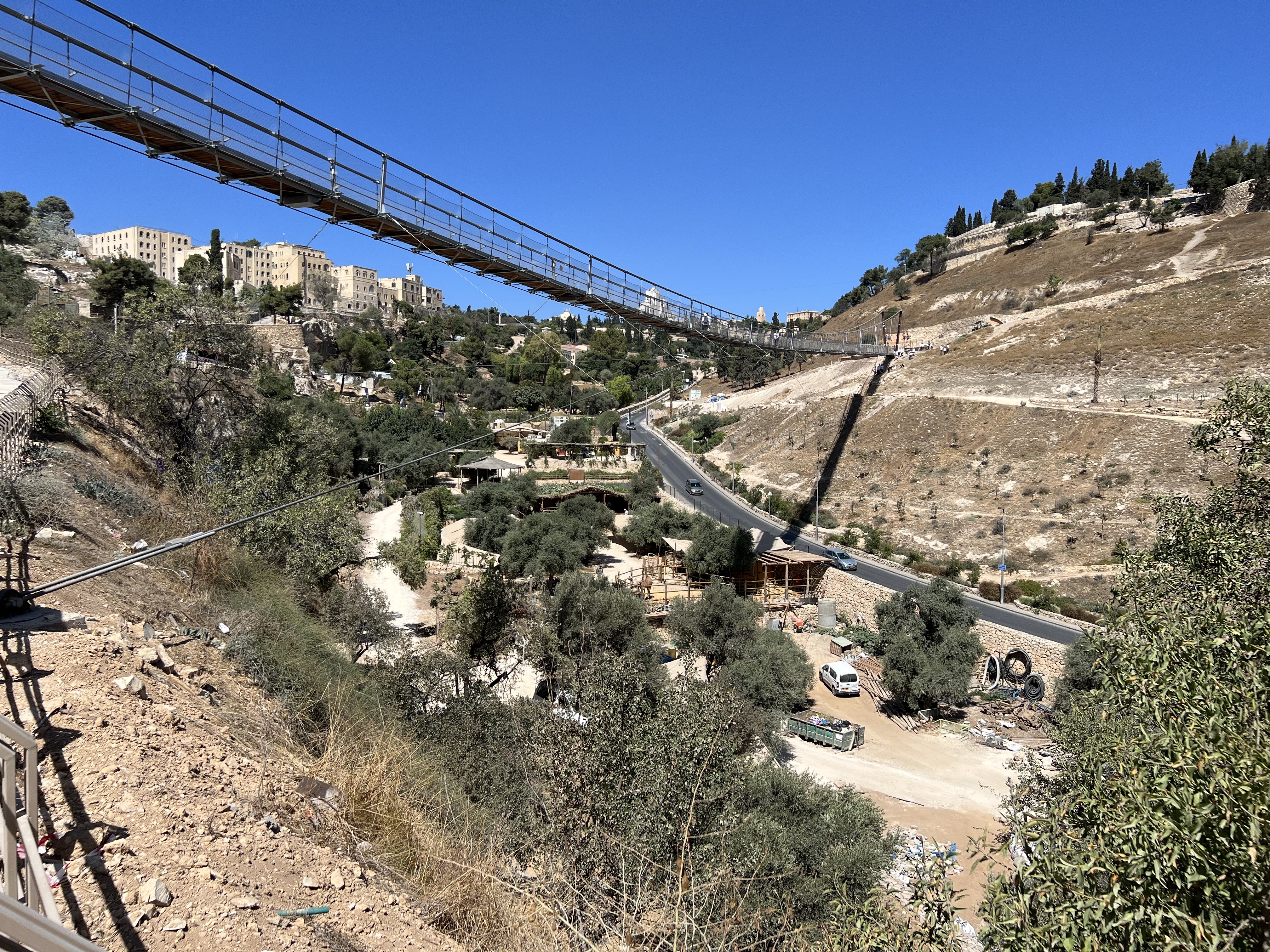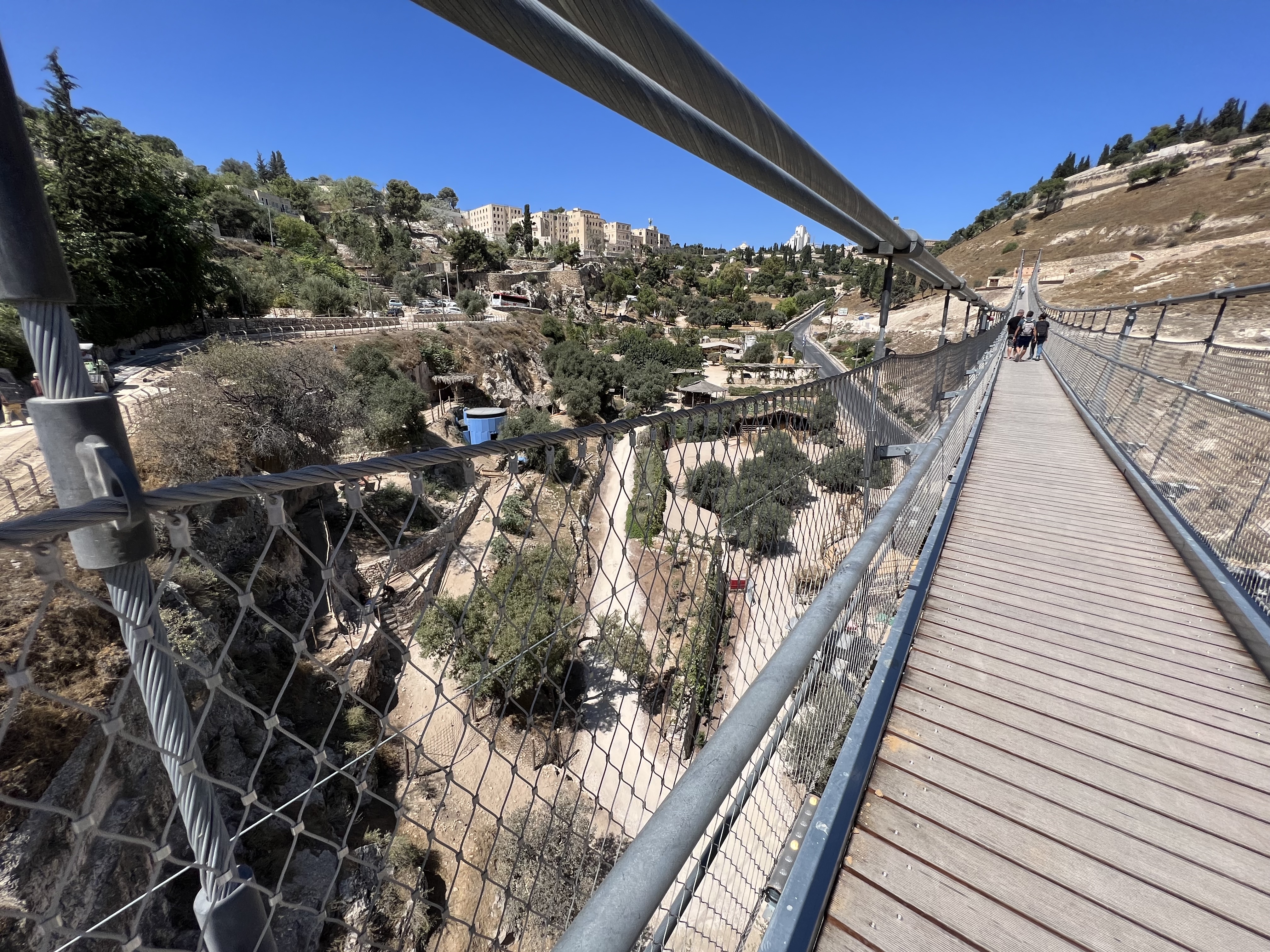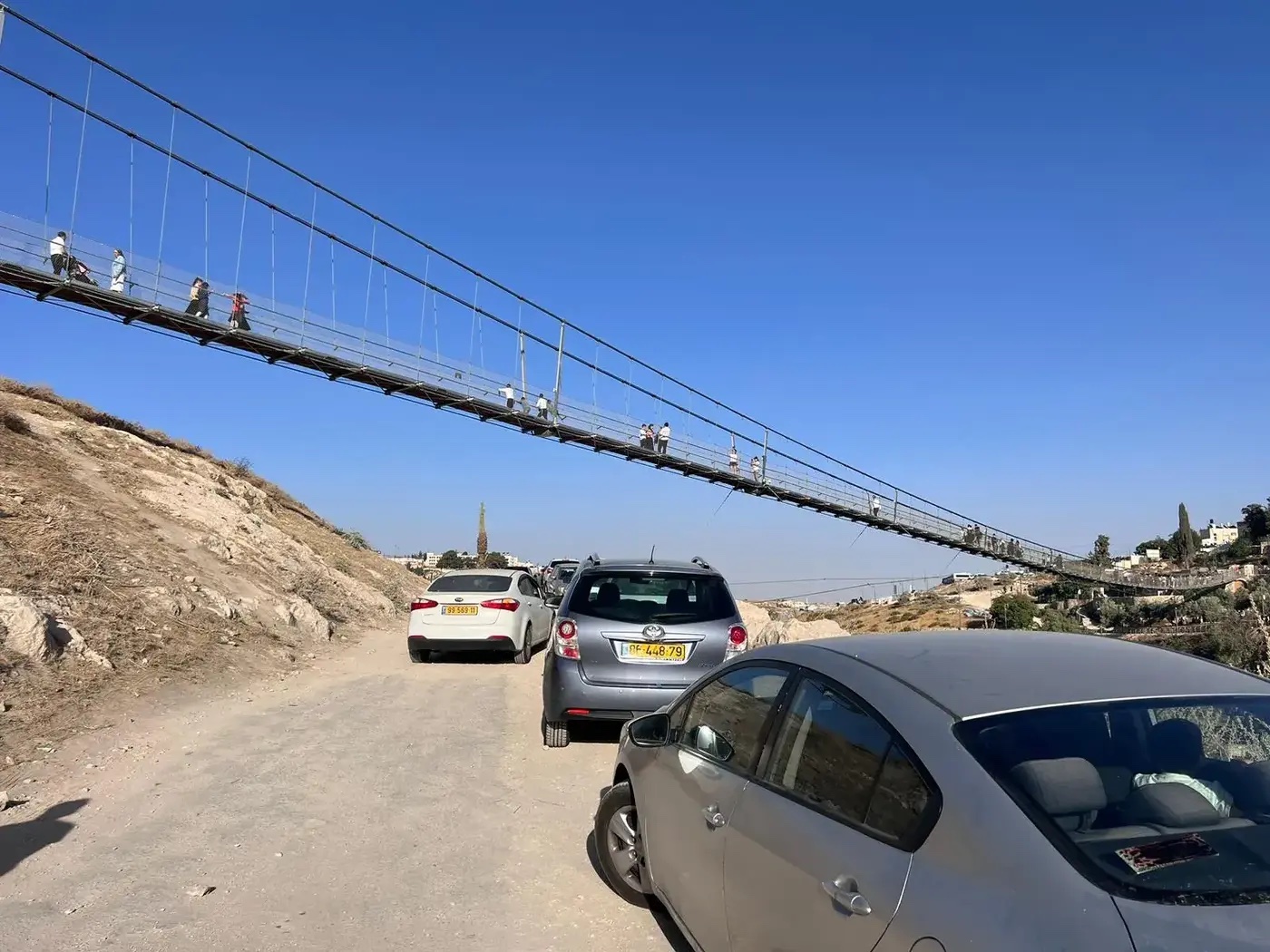Publishing date: 17/11/2023

* The project is located on sign #8 on the above map.
Location
Wadi Rababe (The Hinnom Valley Park).
Initiator
Elad Settlers’ Association, Moriah Jerusalem Development Corporation.
Implementer
JDA.
Budget
NIS 20 million.
Project Description
This project is a hanging cable bridge that is 206m long and rises 35m above the Valley of Hinnom. The bridge is designed for pedestrians crossing from the Abu Tor area towards the Christian cemetery. It starts from an area controlled by the Elad Settlers’ Association on the slopes of the Palestinian Abu Tor neighborhood (South), heading towards a public road on the southern slopes of Mount Zion (North).
The project was approved despite the permit application not being made public. It was also not in line with Jerusalem’s current outline plan, which does not allow for issuing building permits, and therefore should have received the approval of a detailed outline plan.
Status
Inaugurated on July 30, 2023.
Approving Entity
The Jerusalem Local Council; The District Planning and Building Appeals Committee.
Objections
- An appeal was filed to the appeals committee of the Jerusalem Planning Committee against the permit’s approval in 2018 by Peace Now and Emek Shaveh.
- The appeal was rejected, and the building permit application ultimately received final approval.
Implementations
After its inauguration, the bridge has become an attraction and has had thousands of visitors. However, its political significance as another tool for settler control in East Jerusalem has already become clear. The bridge has no functional use, it does not lead anywhere, and is merely an attraction, meant to promote Jewish tourism to East Jerusalem as part of an overall policy of “Judaization”. At the same time, very little consideration was put to the infrastructure surrounding the project, and no parking was planned. As a result, visitors park on the access road to the Palestinian neighborhood of Silwan, blocking its residents’ access.


Pictures above by ACAP.

(Taken from: Walla News)